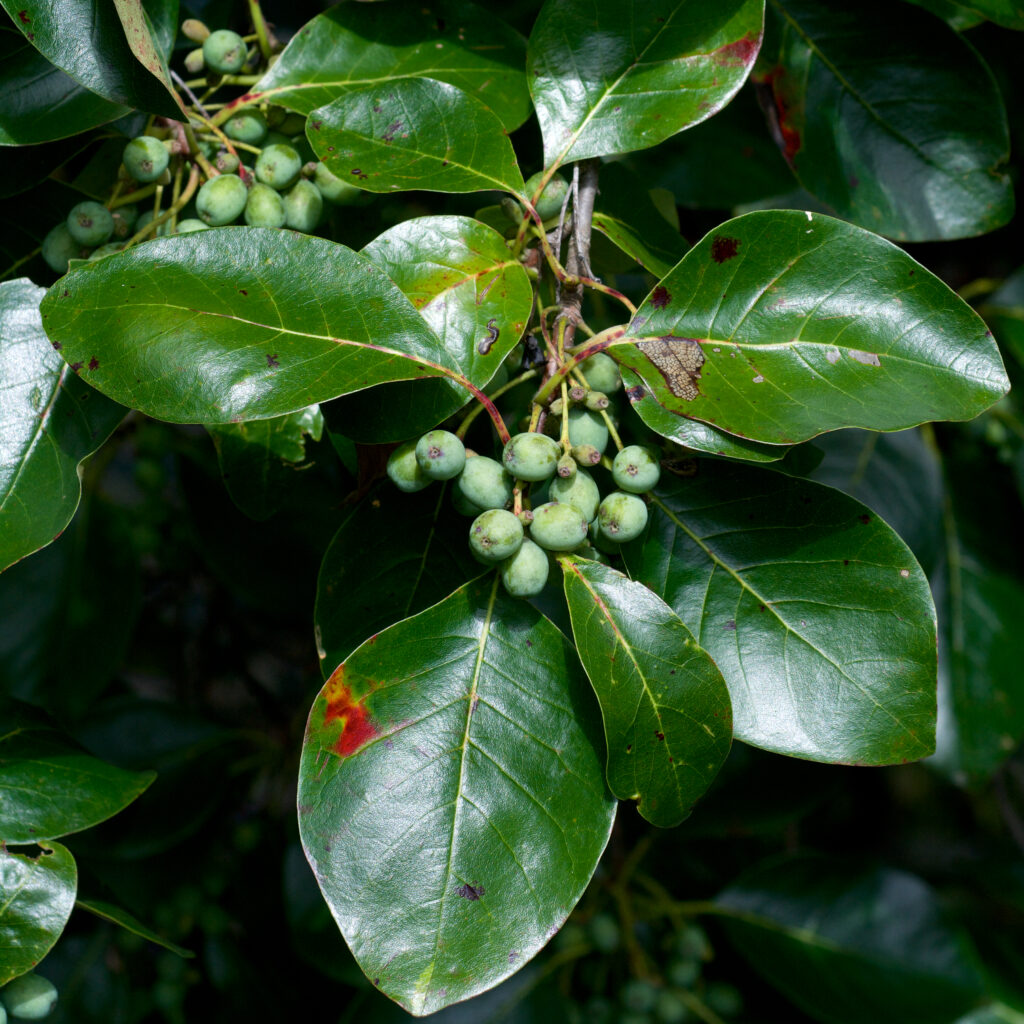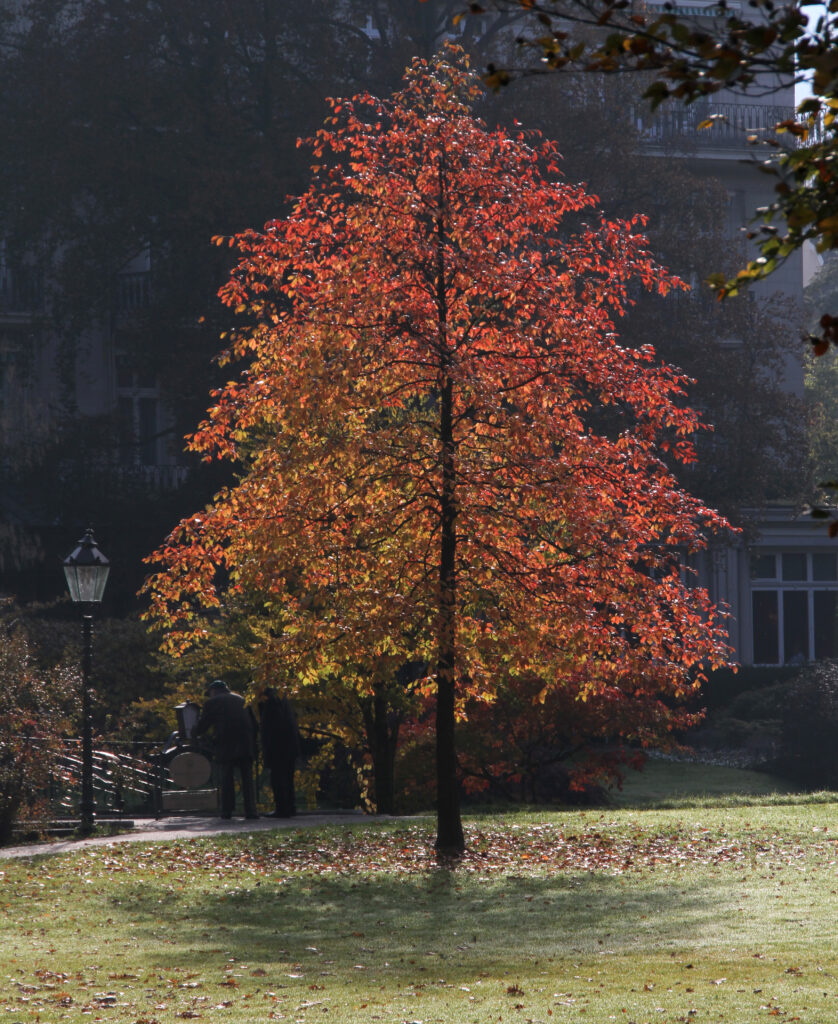Nyssa sylvatica
Black gum, sour gum, bee gum, black tupelo, tupelo, pepperidge, beetlebung… that’s a lot of names! Whatever you call it, Nyssa sylvatica is extremely important tree economically and ecologically. Its wood has a variety of uses from tool handles to wheels to even bowls. Moreover, this tree is an important resource for honey production. It produces large amounts of nectar which honey bees use to create honey. Historically, beekeepers used the hollowed out portions of the tree as makeshift beehives (which is where the name “bee gum” comes from). Black gum is prevalent throughout the Southeast and found in all kinds of environments.
Family: Nyssaceae
Foliage: Deciduous
Mature height range: 60-100 ft. tall, rarely 115 ft.
Light exposure: Full sun to full shade
Soil preference: Moist, well-drained soils
Tolerance: Tolerates a wide variety of sites, including dry and wet, but often succumbs to insect and disease damage as it ages
Wildlife: Fruit are consumed by birds and mammals; nesting by birds, mammals, and insects; important nectar source for pollinators; and larval host plant for tupelo leafminer moth (Antispila nysaefoliella) and forest tent caterpillar moth (Malacosoma disstria)

Common name: Black Tupelo
Along the Kings Bluff Loop at Pedestal Rocks Scenic Area in the Ozark National Forest
Ozark National Forest, Pope County, Arkansas


